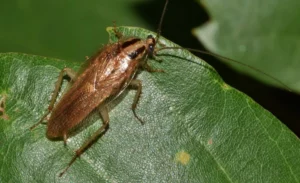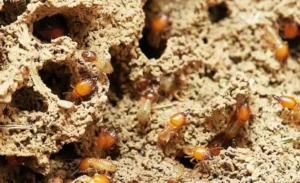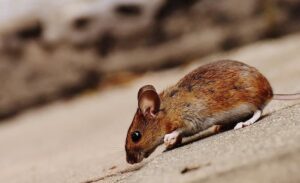While termites and ants look very similar to each other, and both species will swarm in summer to mate and scout for new nesting areas, there are several things that you can use to tell them apart before you call a pest control professional.
Physical Differences
Body Shape & Antennae
The main difference between these two pests can be observed in the abdomen. Termites have a uniformly shaped abdomen with no defined waist. It doesn’t taper in the middle, and their entire body seems more rectangular. In contrast, ants have three defined body parts: head, abdomen, and thorax, with pinched, narrow waists between each section.
Their antennae also differ in shape – termites have straight and shorter antennae, while ants have longer and elbow-shaped antennae.
Coloration
Since ants are always seen loitering in the yard or other outdoor settings, they most commonly have a dark red to black hue. On the other hand, termites tend to avoid being in the light and are light-colored, translucent, or milky. Termites congregate in dark areas and it’s uncommon for them to be seen outside their nests.
Wings
Fly ants and winged termites both have four wings in total. However, the appearance of these wings can help you determine which pest you’re dealing with.
Both the front and back set of termite wings are identical in size and shape. However, termites’ wings extend beyond their bodies.
In contrast, flying ants have differently sized front and back wings. The hind wings are shorter than the front wings, and all the wings are proportional to the ant’s body.
Behavioral Differences
If you don’t find live insects to look at the physical features, you can still tell termites and ants apart based on their behavior.
Visibility
As mentioned earlier, ants are relatively easy to see since they come out of their nests to look for food. In contrast, termites are hard to find since they stay hidden in their nests and don’t like to be in the light. You’ll only find termites when you break into their nests.
Interaction with Wood
Both termites and ants cause wood damage, but they do it differently. Termites are notorious for causing significant wood damage since they tunnel into the wood, chewing and eating away the carvings. They then create dirt-caked tunnels to facilitate movement and leave behind debris that looks like coffee grounds or sand.
On the other hand, ants drill through wood without consuming the carvings. They tunnel through wood with the sole purpose of creating their nests. Since they don’t eat wood, the debris they leave behind is more like wood shavings or mulch in texture.
Therefore, if you see wood shavings on the floor and find hollow tunnels on wood, you’re dealing with ants. But if you find wood that is ragged and caked with mud, you’ve got a termite infestation.
Diet
Another difference between termites and ants is the food they consume.
Ants are omnivores that feed on the dead decaying matter of both plants and animals. They can also feed on seeds, nectar, food debris, and other insects. In contrast, termites only feed on cellulose-rich items such as wood and paper.
Life cycle
Ants pass through four stages of growth and development; egg, larva, pupa, and adult. On the other hand, termites have three growth stages; egg, nymph, and adult.



